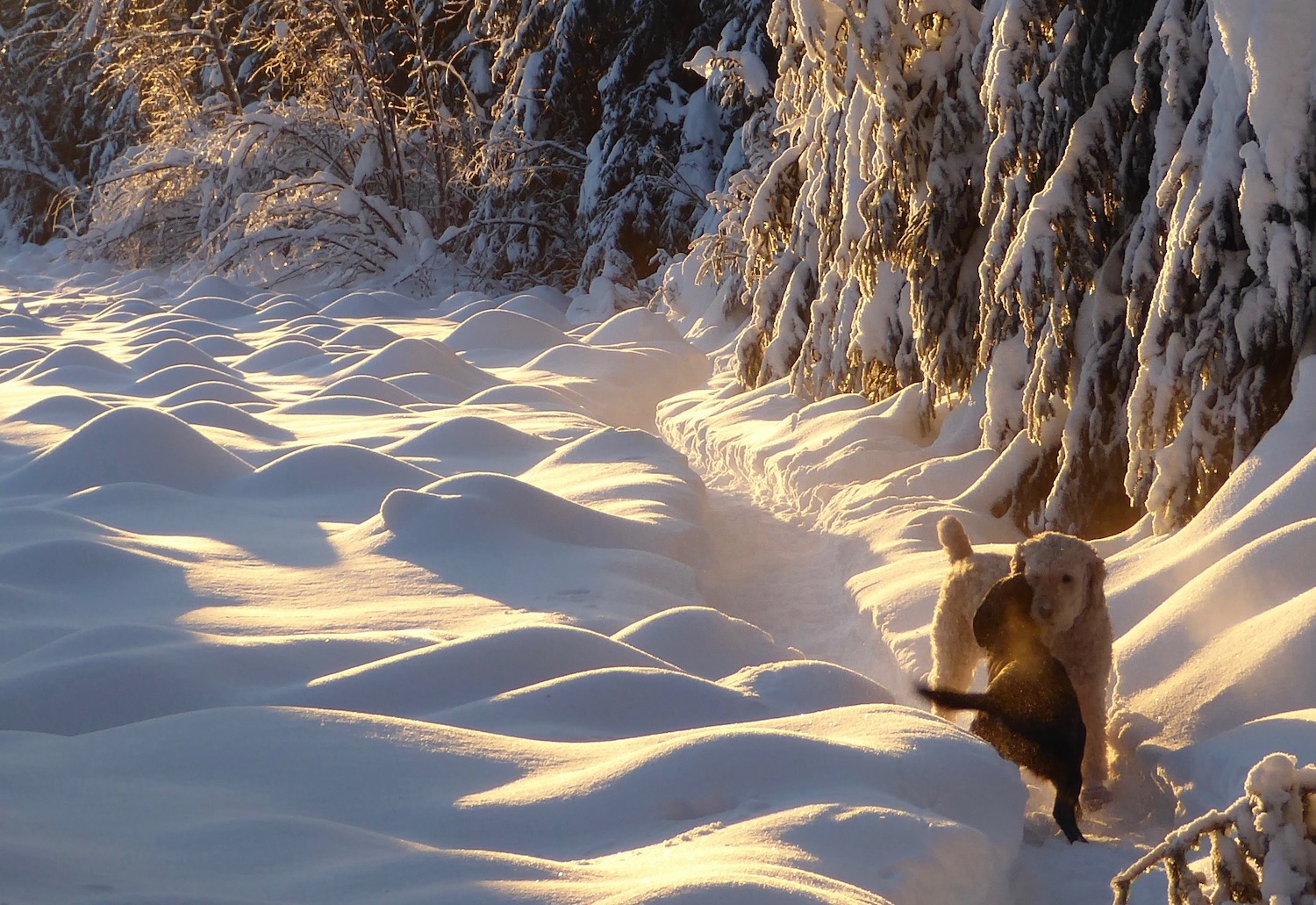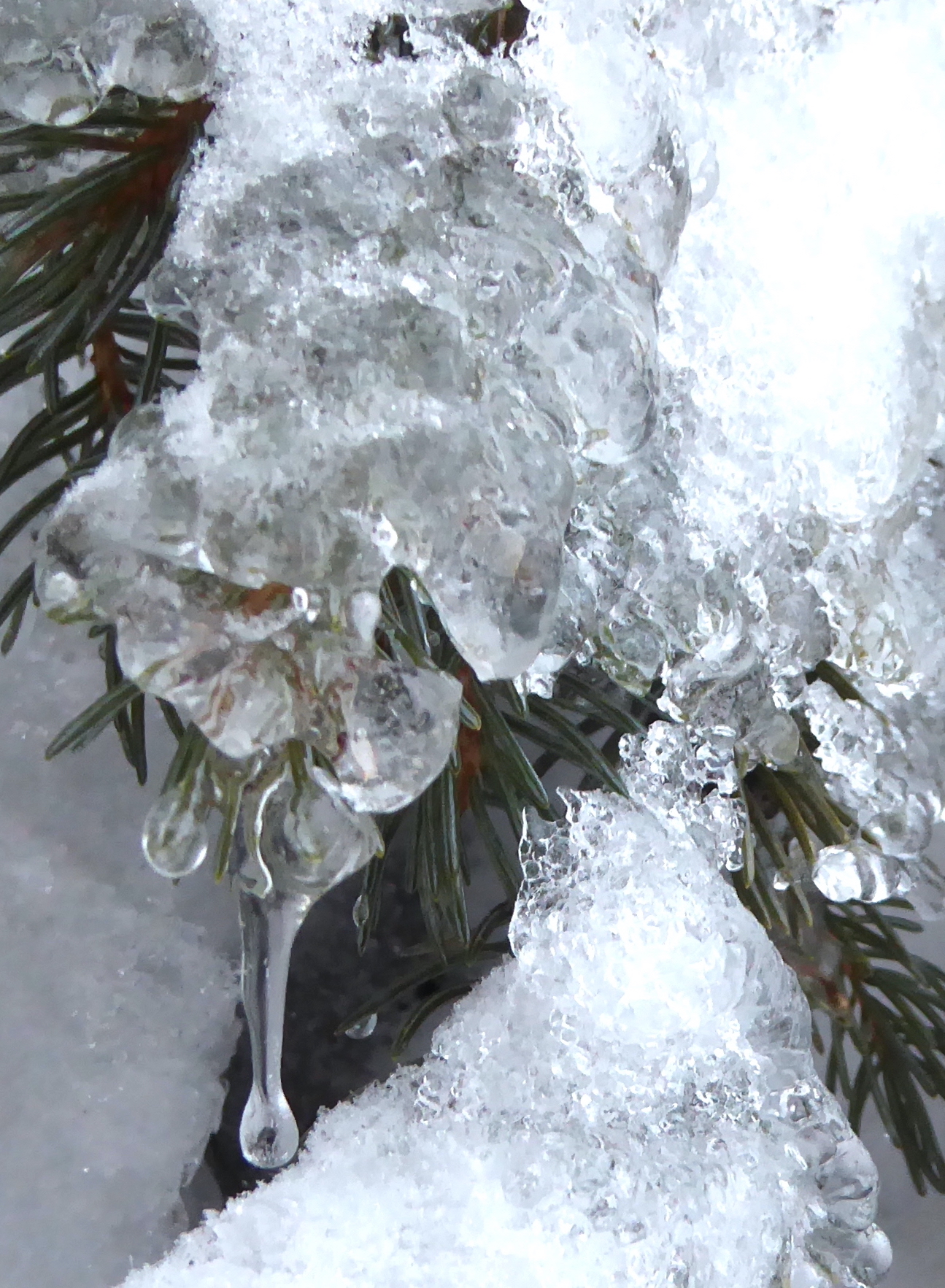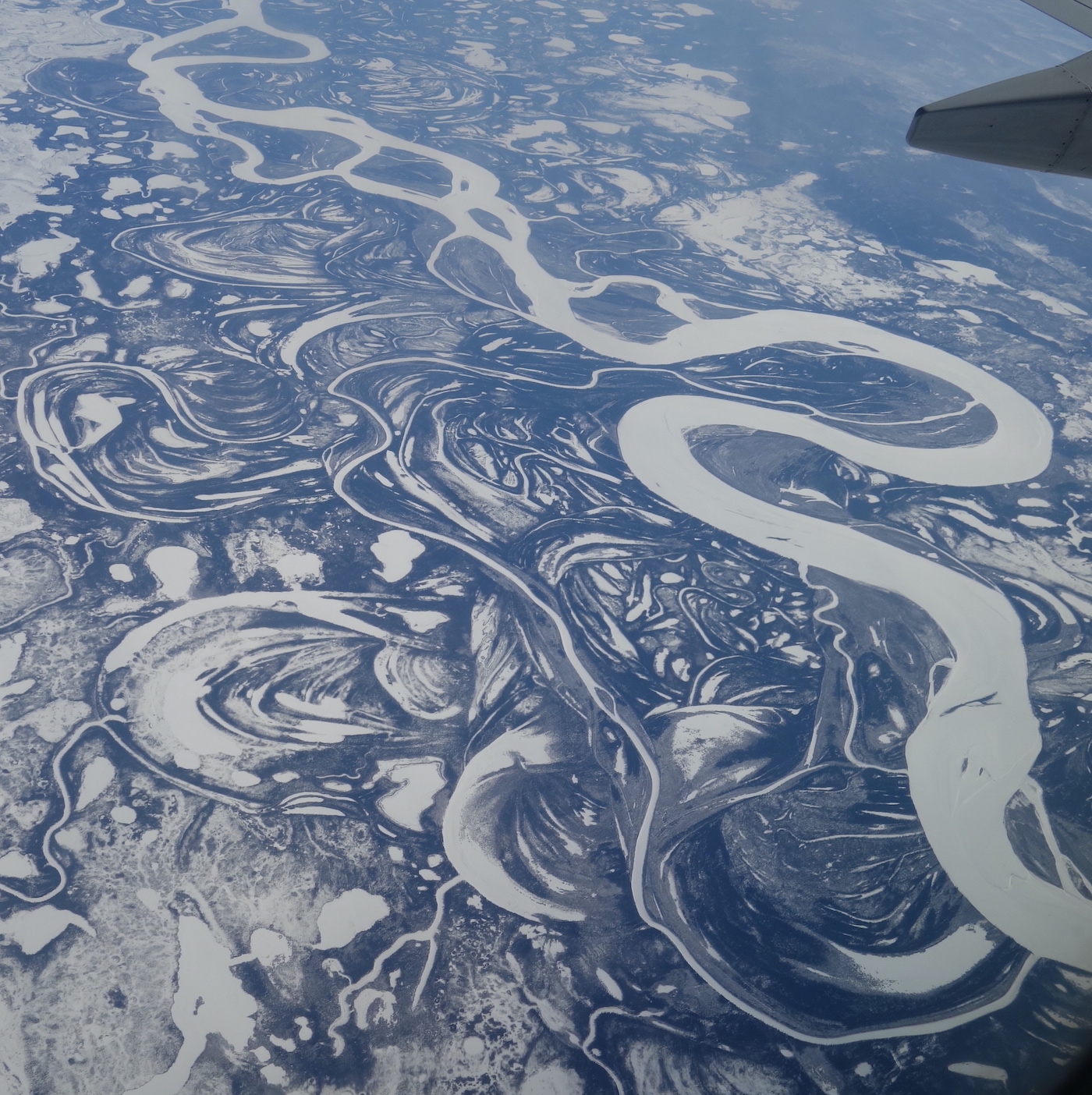Endless northern winter about to end
Ned Rozell
907-474-7468
April 14, 2022

Two dogs greet each other Jan. 7, 2022, when the temperature was minus 22 F and the sun set before 5 p.m.
In mid-April, despite a day length that is four hours longer than Miami’s, middle Alaska is still a part of the cryosphere.
Scrolling back through my photos, I see snow on the ground during a high school running competition on Sept. 27. Patches of that snowfall hid from the sun all winter, surviving on north-facing slopes.
For the last seven months, our reflectiveness and slipperiness has been high. Such is life in Fairbanks, Alaska, even in a warming world.
Thinking back over the long winter, there was one extra-dramatic event here, when it rained more than an inch the day after Christmas. That water splashing onto supercooled surfaces — like asphalt roads and the snow surface — morphed to ice. Our tarp garage collapsed; I still haven’t dealt with it.
Though some of that ice has melted or sublimated straight into a gas, helping to make our roads a less jarring experience, a layer of ice remains in the snowpack like a pane of glass.
That has been tough on the moose, who take that hit right in the shins. They stumbled to our packed snowmachine (and automobile) trails right after the December rain and never really left them.

Ice hangs from a spruce branch on Jan. 12, 2022, the result of a Fairbanks rainstorm on Dec. 26, 2021.
Since moose need to eat the equivalent of a large garbage bag full of frozen twigs to survive each night, the ice and deep snow that hindered their movement has been significant. Biologists won’t know the full effect for a while, but Alaska Department of Fish and Game managers already canceled next season’s antlerless moose hunt in the Fairbanks area.
Also, right after the Christmas ice storm, University of Alaska Fairbanks ecologist Knut Kielland speculated on hard times for owls and other creatures that depend on voles that live under the snow surface. With that layer of ice sealing the small creatures off from scurrying on top, how would an owl get its food?
That too, may be playing out; I have not heard boreal owls singing this winter.
Mark Ross, who works for the Alaska Department of Fish and Game at Creamer’s Field in Fairbanks, said people have delivered three boreal owls this spring that perished while hanging around their bird feeders. He weighed the robin-size birds and found each to be undernourished.
But our above-average winter snowfall is now ripening and shrinking. Liberated scent molecules from dog manure, no longer locked up by cold, are wafting in the air.
In the middle of this cooler-than-average April, rivers are still for the most part white ribbons twisting through Alaska. But the sun has more to say about that every day.
Our home river the Tanana, which winds 550 miles from near Canada to the village of Tanana on the Yukon River, is surrounded by a winter snowpack 220 percent of its normal April size.
The watersheds of the entire Yukon River drainage have at least 150 percent above-normal snowpack stored on the hillsides and flats.

The frozen Yukon River winds through flatlands in mid-April 2018.
It’s too early to know if people in river villages will experience ice-jam floods or the preferred, mellow “thermal breakup” this spring. The weather in the next few weeks will call the shots. The worst-case scenario: very cold weather followed by extreme warmth.
Whatever happens, winter’s toll will reveal itself real soon. One thing I know: I will forget all about the cryosphere when I hear a Townsend’s warbler, fresh up from Costa Rica, singing from the top of a spruce tree.
Since the late 1970s, the University of Alaska Fairbanks Geophysical Institute has provided this column free in cooperation with the UAF research community. Ned Rozell is a science writer for the Geophysical Institute.


